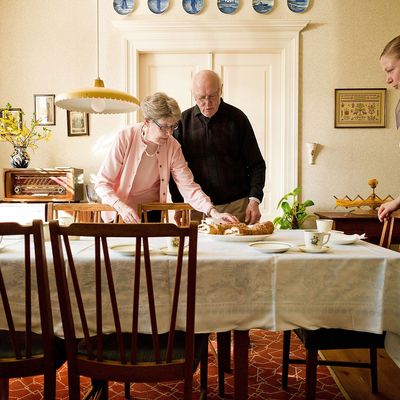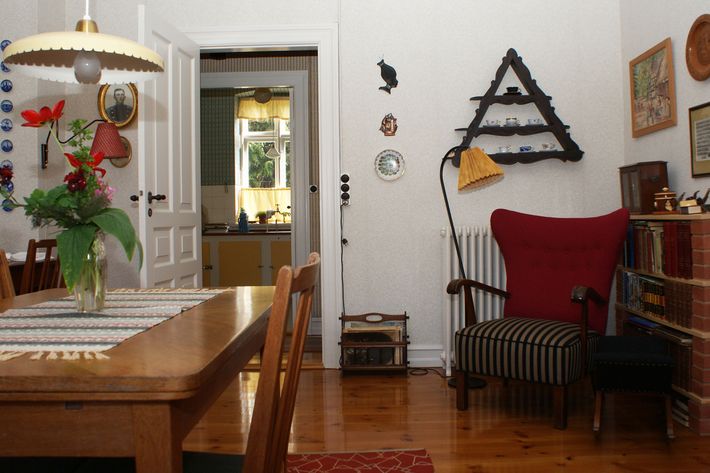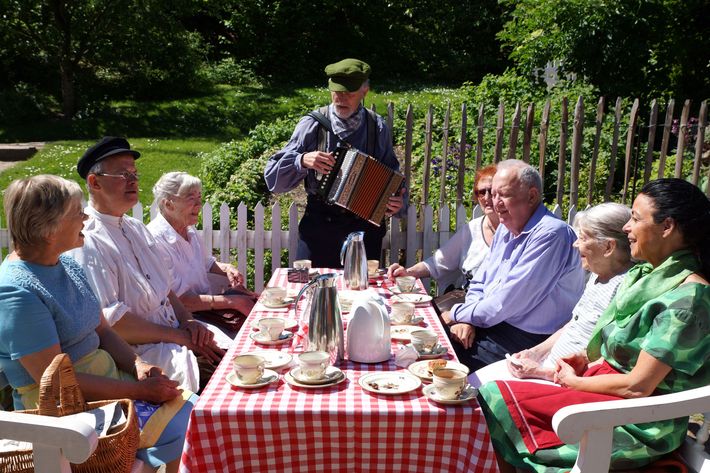
For people with Alzheimer’s, a small reminder of something from the past — a smell, a sound, even a certain texture — can sometimes be enough to trigger a memory. Imagine, then, what could be done with a whole apartment stuffed with those triggers.
As NPR recently reported, that’s the inspiration for the “House of Memories,” a Danish museum-within-a-museum built specifically for Alzheimer’s patients. Housed within the larger Old Town Museum in Aarhus, Denmark, it’s a home designed to look like it was transported straight from the 1950s, down to the last detail. The smell of the cleaning products, the spice containers in the kitchen, the clothes on the hangers — all are the result of painstaking research into what would have been used at the time.

The idea is that the environmental cues may prompt patients to more easily remember things the disease had made them forget. With Alzheimer’s, “you have difficulty strategically recalling your past,” psychologist Dorthe Bentsen, the head of Aarhus University’s Center on Autobiographical Memory Research, told NPR. “If you start a conversation asking, ‘What did you experience when you were young?’ then you are asking for strategic retrieval, which we know is not going to work.”
A more effective strategy, she explained, is “to bypass the need for executive process by providing some sort of associations and then hoping that a memory can be activated.” At the House of Memories, the associations were specifically formulated to play on the seniors’ so-called “reminiscence bump” — research has shown that adolescence tends to be the most memory-rich period of our lives, and for Memory House’s target audience, that means a disproportionate amount of memories will be rooted in the ‘50s. And in many cases, NPR reported, the immersive sensory experience appears to work:
A coffee substitute from the era elicits an especially enthusiastic response as the visitors are invited to take a whiff. “Ah! That smells like the old days!” exclaims one visitor.
Another visitor points to a giant pot perched on the radiator, and with a little prompting from the hostess, begins explaining the process for soaking and boiling baby diapers.
Someone else sees a toothbrush on the counter and a discussion ensues about when, exactly, brushing one’s teeth moved out of the kitchen and into the bathroom.
Some places have taken the idea a step further, creating entire towns full of time-specific memory triggers. In the Dutch “dementia village” of Hogeway, for example, residents with Alzheimer’s and similar conditions live on their own in homes styled to resemble certain decades, looked after by full-time staffers posing as store cashiers and other jobs around “town.” Similar setups also exist in Switzerland and England.

The House of Memories, meanwhile, is gearing up for a change that’s somehow both hopeful and deeply sad: Eventually, the museum will redecorate in 1960s style, to accommodate the next generation of Alzheimer’s patients.




